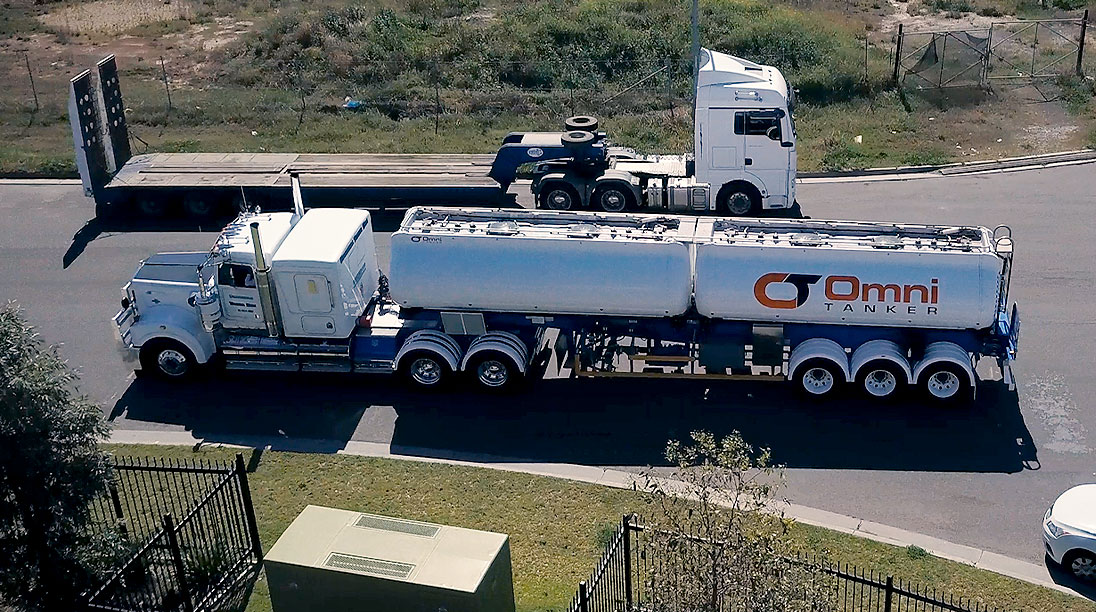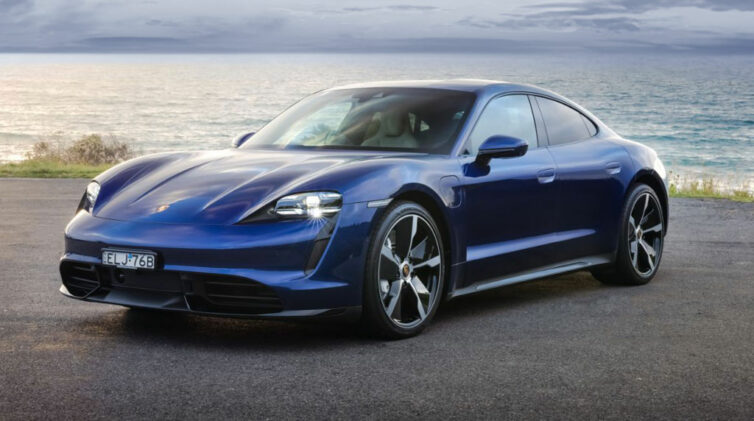The deal, officially announced this month, is a major coup for Omni Tanker that has developed, patented and manufactured its truck trailer-mounted tanks specifically for the transportation of highly corrosive liquids including acids (such as sulfuric, sodium hydroxide and hydrochloric), bleaches, ammonia and similar Class 8 chemicals.
The tanks are formed by winding carbon fibre and resin together, so they are one piece with no seams.
Omni Tanker CEO Daniel Rodgers told GoAutoNews Premium that the global market for these liquid chemical tanks is valued at $800 million to $1 billion a year.
“It’s a large sector globally and it is a niche within the global bulk transport industry,” Mr Rodgers said.
“It covers all sectors of the corrosive liquid transport sector – portable tankers, sea, road and rail.”
MAC LTT (MAC Liquid Tank Trailer), based in Ohio and which builds the trailers that carry the tanks, has already commissioned Omni Tanker’s first composite tankers for clients Brenntag North America and All Chemical Transport.
MAC LTT will now become Omni Tanker’s sales agent through its North American dealer network.
In officially launching the product into the US and announcing the partnership between Omni Tanker and MAC LTT, Australian ambassador to the US Arthur Sinodinos said: “Australia is world-class in advanced materials, especially carbon-fibre, and Omni Tanker is a shining example of our ability to innovate locally and launch globally.”
Omni Tanker started by making small tanks that were developed in Australia and sent to Europe. The program was then supported financially and logistically by the federal government through the Advanced Manufacturing Growth Centre (AMGC).
Mr Rodgers said what opened the US market to the product was the ability for his company to connect incompatible materials to make the tanks.

The prototype of the first tank to the US was made a year ago and aided by Omni Tanker’s strong relationship with the University of NSW that allowed it to rapidly develop the tanks.
“The goal now is to develop the manufacturing process and certifying the product and building it,” he said.
“We will continue to manufacture in Australia but we see the next stage as having an offshore manufacturing facility.
“As the market adopts the technology and we go to a much larger scale of production, we will maintain the developing and prototyping and then partner or build our manufacturing facilities.”
The tanks have additional benefits over existing steel and fibreglass chemical tanks.
Mr Rodgers said the tank weight was 30-40 per cent of steel “which means the payload of the truck can be increased by 8-10 per cent which in bulk liquid transportation, is a very big increase.”
The tanks are more expensive than existing types but Mr Rodgers said there was strong ownership value.
“The price is attractive considering the lifetime cost,” he said.
“Steel and fibreglass tanks need to be maintained and need relining which means there is time off the road for the tanker.”
He said that because the tanks are formed by winding carbon fibre and resin together, they are one piece with no seams and therefore do not need to be relined.
“The fact that they are lighter and stronger and have minimal maintenance have reflected our success already in Australia.”

Mr Rodgers said that an additional benefit was the “excellent” fire protection of the tanks.
“That’s a massive bonus for haulage companies and this ability to meet strict fire regulations is one of the reasons our tanks are becoming popular in Europe, particularly Germany,” he said.
At the announcement in the US this month, MAC LTT vice president Matt Niemeier said his company was “thoroughly impressed and immediately interested in the prospect of partnering with them” after seeing the tank.
“It was immediately evident that their innovative design is a technological leap forward in the transport of aggressive chemicals,” he said.
“Combined with the MAC LTT manufacturing processes, Omni Tanker will improve the safety, efficiency and versatility of North American freight operators.”
Advanced Manufacturing Growth Centre (AMGC) managing director Jens Goennemann said: “To watch Omni Tanker take Australian innovation to the world is a testament to their commitment, the value of their product and it reinforces AMGC’s goal of helping Australian manufacturers compete on a global scale.”
Omni Tanker’s design uses patented technology including a seamless thermoplastic lining without welds or joins, wrapped in a carbon-fibre surround to keep the chemical content pure. Previous tank construction included a rubber liner with a steel or fibreglass surround.
Omni Tanker chief technical officer Luke Djukic said there are three elements to the tank:
- Omni Shield – made from thermoplastic so is chemically resistant, has no degradation and no welds or joins.
- Omni Fort – the carbon-fibre reinforced polymer shell that has high strength, low weight, exceptional fatigue resistance and built-in fire protection.
- Omni Bind – a patented material and process that connects the two other surfaces.
Mr Djukic said the Omni Bind process was generally very difficult to achieve because the two materials – carbon-fibre and thermoplastic – are incompatible for bonding and it was a bit like “sticking to teflon”.
Uses for the Omni Tanker also include chemical storage, rail cars, general transport and, in the aerospace industry, as fuel cells and rocket tanks.
By Neil Dowling












 Read More: Related articles
Read More: Related articles

